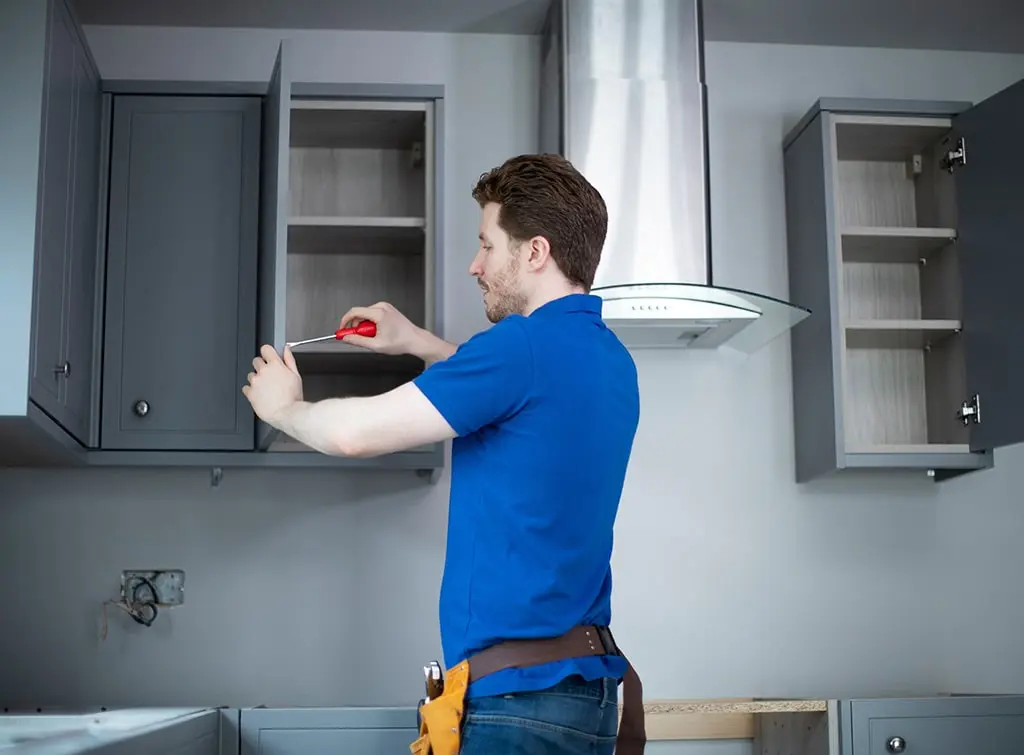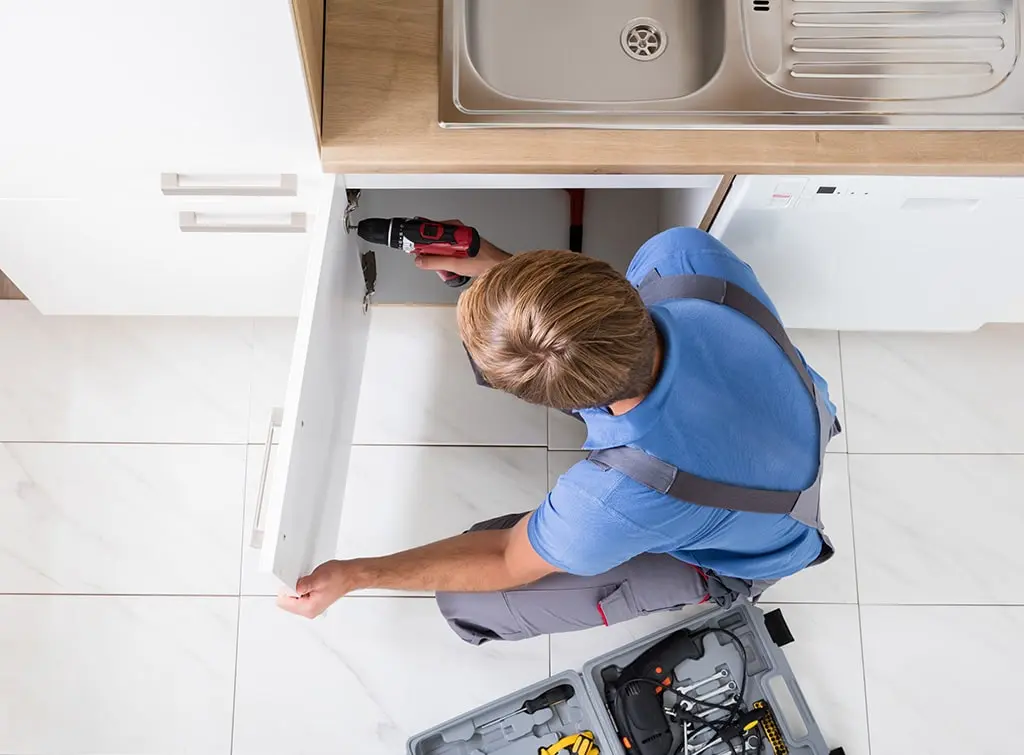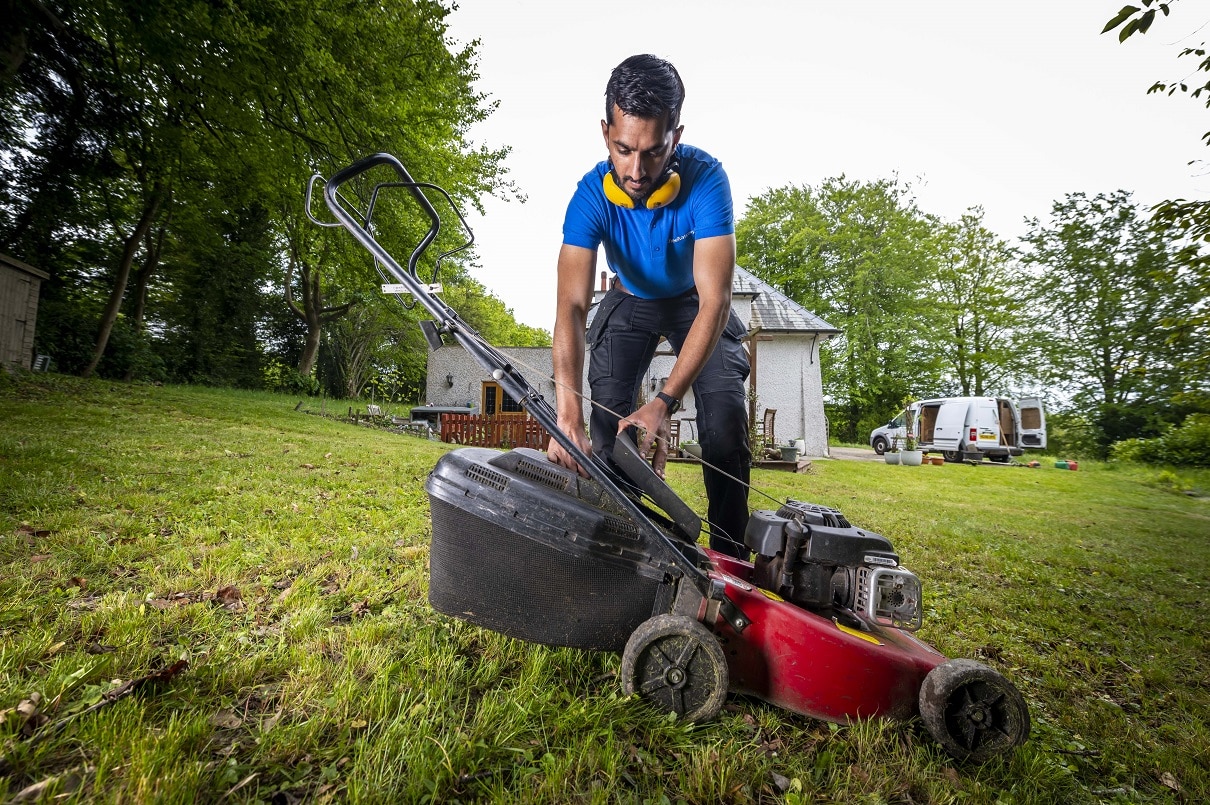Blog>Trade>Starting a Business>How to become a kitchen fitter
Last updated: 8 January 2025
How to become a kitchen fitter
A physical trade that requires both creativity and an eye for detail, kitchen fitting is a great starter trade. It’s also one that’s never out of work. If this sort of trade interests you, read our blog to learn how to become a kitchen fitter.

Why should you become a kitchen fitter
When it comes to trades that are both active and creative, few compare to kitchen fitting. Requiring no small amount of skill, good kitchen fitters are always in demand throughout the country.
This in turn makes it an ideal first trade for anyone after a more specialised role in the future.
Perfect for those who want to work with their hands and their mind, every kitchen fitting project is different.
So, to give you an idea of what’s involved when you become a kitchen fitter, we’ve created this guide. It breaks down the day-to-day activities of a kitchen fitter position, and the qualifications needed to become one.
What does a kitchen fitter do?
As you may be able to guess from the name, a kitchen fitter’s main role is to install kitchens. However, there’s more to the job than just this. In fact, experienced kitchen fitters have some of the most diverse skill sets in the trade industry.
From ripping out old kitchen units to installing entirely new ones, kitchen fitters work with various different people. You might speak with a designer one day to settle on a new kitchen plan. Only to team up with a tiler the next to create a new floor.
The career is that varied.

Common kitchen fitting jobs
When you become a kitchen fitter, you’ll be faced with plenty of new work challenges to overcome. Below are just some of the most common pieces of work you’ll need to handle on a daily basis:
Removing old units and fittings
Installing units, fittings, worktops, and cabinets
Working with blueprints to meet project requirements
Measuring work areas based on plans for accurate installation
Designing and cutting worktops and kitchen-specific furniture
Laying new floors or wall tiles
Building new walls and knocking down old ones
Working with hand tools
Of course, these are just the core aspects of the job. As you get more experienced, the list of what you may have to do will only get bigger.
Make your mark as a trusted kitchen fitter
Find more work in your local area as one of our members
What skills are needed to be a kitchen fitter?
Besides knowledge of kitchen fitting skills in general, there are plenty of other soft skills vital to this role. So, if you want to become a kitchen fitter, consider focusing on these areas as well:
Good attention to detail
Creativity and an eye for detail
Teamwork skills
Project management knowledge
Technical skills
Clear communication
Admin skills
A solid problem-solving ability
The ability to calculate the financial cost associated with fittings
Being physically fit
By cultivating these kitchen-fitting skills, you’ll likely find it much easier to slip into a kitchen-fitting role.
What else do I need to be aware of as a kitchen fitter?
Besides trade knowledge and the right kitchen fitting tools, the one major thing you need to be aware of in kitchen fitting is health and safety. Much like painting and decorating and building work, kitchen fitting does come with risks.
By being aware of health and safety guidelines associated with this trade, you can mitigate the chance of injury.

How do you train to be a kitchen fitter?
When it comes to kitchen fitter training, there are two primary ways to earn your qualifications – college and apprenticeships. Both will provide you with the skills you need to succeed in the industry.
Thus, it’s up to you which one you go with.
For example, college training will give you an in-depth look at the trade and what’s required on a theoretical level. However, an apprenticeship is typically more hands-on, while also allowing you to earn as you work.
Enjoy a range of benefits and find more work
Get more leads and increase your revenue - starting today!
Kitchen fitter qualifications
As with any trade, it’s always a smart idea to get qualifications for your new role. So, if you are thinking of getting kitchen fitter qualifications, we recommend looking at the following:
A Level 1 Diploma in Construction
A Level 1 or 2 Certificate in Carpentry and Joinery
A Level 2 Diploma in Plumbing Studies
A Level 2 Diploma in Fitted Interiors
A Level 2 Interior Systems Installer Apprenticeship
Any one of these qualifications will be enough to get you started, though there’s no reason you can’t do multiple.
Do I need qualifications to be a kitchen fitter?
Like many trades, there is no legal requirement stating that you must have qualifications to work.
However, we always recommend traders invest in qualifications. That way you’ll definitely have the skills and knowledge to do your job properly.
Customers are also far more likely to trust you if you have certifications as well.

How to get more experience as a kitchen fitter
Once you’ve garnered your initial kitchen fitter qualifications, the best way to gain experience is through work. This can be via an apprenticeship or as a newly qualified fitter, whatever works best for you.
On top of this, you could also look at specialising in certain fitting areas, such as carpentry or plumbing. This will expand your kitchen fitting knowledge, but it will also make it easier to transfer trades in the future.
Where should you apply for kitchen fitting jobs?
There are many places where you can apply for kitchen fitting jobs, such as online or locally. Job websites are likely to be your go-to source for new jobs but don’t neglect local advertising. After all, your main goal should be to get a job rather than where said job is.
On top of these areas, you might also want to consider looking at online directories. As popular as ever, online directories remain a key place for customers to find reputable tradespeople in their area.
Make your mark as a trusted kitchen fitter
Find more work in your local area as one of our members


